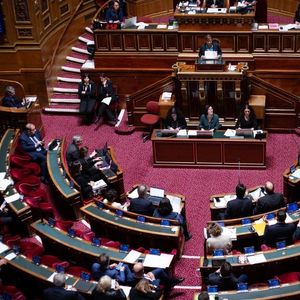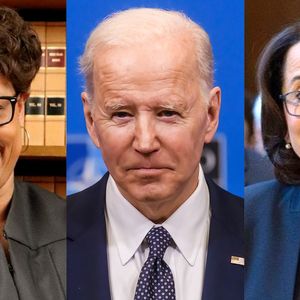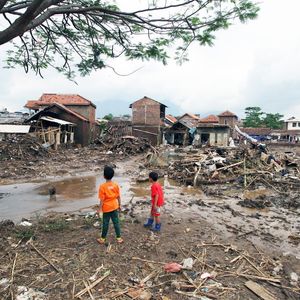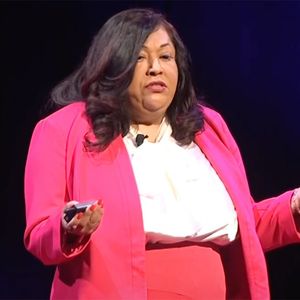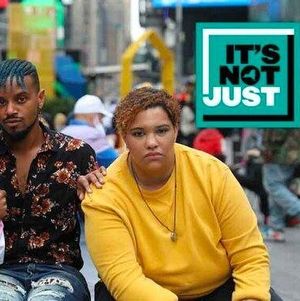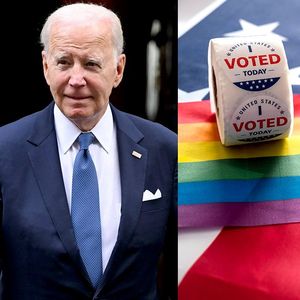Ron Amato's photography has been a part of the LGBTQ+ visual landscape for more than a decade through publications like The Advocate, and Out magazines. You've undoubtably seen his work at some point in the past decade, whether through his fashion spread in Out magazine, on Out Traveler illustrating a piece about Provincetown artists, or coverage of his award-winning photo books like The Box or projects like "Gay in Trumpland" (which explores the loss of rights and protections for the LGBTQ community under Trump).
It's likely you have been moved by his work. It may have turned you on, or spurred you to buy something, or encouraged you to visit someplace, or to get outside, or to learn more about an artist or photography. As a professor at Fashion Institute of Technology in New York City he's influencing the next generation of photographers.
Out Traveler is collaborating with Amato on an exclusive retrospective of his work with male nudes, unveiling smaller collections throughout the week before revealing a 75-photo gallery, a mid-career reflection on the work that continues to fuel him.
In the following interview the gay photographer reflects on his art, his inspiration, and his affection for Italy and queer culture in Provincetown, New York City, and Berlin.
How did you get into photography?
I’ve been making photographs from a very young age. My father, while not a photo enthusiast, had a lot of cameras. There were a couple of different Polaroid cameras, a twin lens reflex and a Kodak Instamatic (the one that took 126 cartridges) in our house. I just started picking up the cameras and making photos. I couldn’t have been older than 10. I remember dropping off film at the little Fotomat hut in the parking lot of the grocery store. It was exciting to wait for the prints. It was a very different experience from photography today. Seeing my interest, my parents bought me a photography “kit” for a birthday. It came with everything you needed to make black and white photographs — a camera, developing tank, enlarger. Everything was plastic, kind of a beginner set. I loved it. I wish I still had it.
Tell me how your Men of Provincetown series came about.
It was never intended to be “Men of Provincetown.” That sounds a little like a show on Bravo! I first went to Provincetown in the ’90s when a friend called to ask if I wanted a room in his share. I didn’t know a lot about the town but was totally game. I threw a camera, some lenses and bunch of film into my bag and off I went. I didn’t know what to expect but making photographs is integrated into everything I do. It wasn’t until my second week that I started to make photographs of men in the dunes and on the beach. It was a visceral experience and a natural progression to incorporate the body into the landscape. It started what’s become a more than 20-year pursuit of photographs of men in nature. I'll probably be doing it in some form for the rest of my life.
You’ve also done a series of artists in Provincetown. What is it about P-town that inspires you?
As a gay artist, Provincetown embodies much of who I am. I’ve traveled a great deal but never found another place like it. My body relaxes there. My creative juices flow there. There is so much to be inspired by — the art, the nature, the men, oh and the men (did I say the men?). Seriously, there is a deep sense of community among artists, LGBTQ+ folk and nature lovers. It’s like a Venn diagram and I’m right in the middle!
I started the Artists of Provincetown project in 2015 because I wanted to meet more artists and become more a part of the artist community. I found the work of Norma Holt and wanted to continue what she had done, all be it, in a very different way. It was never intended to be as large a project as it’s turned out to be. In 2017 I decided to spend a sabbatical from my teaching position at Fashion Institute of Technology in Provincetown working on artist portraits among other projects. It kind of exploded from there. There is an exhibition of the artist series tentatively scheduled for 2022 at the Provincetown Art Association and Museum. I’ve photographed 66 artists so far and plan to keep going, even after the exhibition.
You continued to shoot a lot of subjects in outdoor settings like parks and the beach. What draws you to those locations?
Making environmental nudes is experientially driven for me. It is the act of making the photographs that keeps me going back. I am rarely focused on the outcome or how they will be received. Nature is not my natural habitat. I grew up in Flatlands Brooklyn, so concrete is my natural habitat. I don’t hike or ski or boat. I make photographs of men in nature. That’s my nature fix. The act of looking at beauty, both in the figure and the landscape and combining them to create a new thing, all while the wind is in my face, the sun is on my skin and my toes are in the water — it’s not an experience I can adequately describe with words. I am transported while making the photographs. It is a formula which is magical for me. I hope the photographs communicate some of that experience.
What do you want viewers to take away from your Men in Nature series?
Just the majesty and beauty of nature, both in the human figure and the landscape. If I can combine those two things so there is synergy between them, that is always my goal. I photograph a lot of reclining figures for this work. A common direction I give models is to imagine they were dropped there unconscious and weightless. I try to get them to remove tension from muscles and to give into the ground, if you will. I want the body to melt into the ground, to become one with the earth.
You have now traveled the world photographing men, including in Turkey, Germany, and Italy. Do you have a favorite foreign location?
Each location offers something different. Turkey was definitely a unique experience. The event I was photographing was Kirkpinar, a Turkish oil wrestling tournament. It’s a culture very different from my own. I came away from the experience with a great appreciation of the Turkish people and the Islamic world. It’s sad to see the direction the country has moved in over the past 20 years. It’s still a beautiful place imbued with so much history and culture. It’s the crossroads of the world really.
The place I’ve been most often is Italy. Italy is a very special place for many reasons, the art, the food, the culture. Also the diversity of the natural landscape is very unique. Within a relatively short train ride, you go from the bluffs of the Amalfi Coast to the hills of Tuscany to the splendor of Venice. It’s quite special. I have a great affection for Italy and the Italian people. And the men, well —.
Berlin is one of my favorite places to visit. If I were to live abroad, it would be my first choice. The tension between its recent past and its current culture is found everywhere in the city. Walking the streets is both a history lesson and a cautionary tale. The LGBTQ+ community there is very vibrant and alive. I really love it. In many ways it reminds me of 1970s New York.
You also started a Men at Home series. Are you able to capture something with your models in those settings that you can’t in outdoor locations?
I approach photographing a figure indoors in a very different way than in a natural landscape. There is an intimacy I am trying to capture when photographing in someone’s home. In a way the images feel more sexual because they seem private. I’m playing the voyeur. I’m showing you something not necessarily meant for your eyes. I like to photograph figures through doorways, in mirrors, from behind, etc. It heightens the voyeuristic nature of the work.
Is there anything you want readers/viewers of the retrospective to know about you or your work?
I focus on the male figure in my work as a way try to understand my own same-sex attraction, as well as sexual attraction in the broader sense. Why and who we are attracted to is one of life’s mysteries. Beside orientation, there is also individual tastes and predilections. I’m in constant pursuit of understanding my own attraction to men in general and to individual men specifically. The camera allows me to react immediately to the beauty I see and the editing process allows me to dwell on that beauty in a constant quest to understand my own attraction to it.
This work (the environmental nudes) has no end. While many of my other projects are self-contained, this pursuit of the environmental nude is open ended. It has recently evolved to include more architecture and fabricated elements outdoors, and in the most recent work (not seen yet), I started using some artificial light. However it’s the same body of work. It is a continuum and I plan to do it until I can’t anymore.
View Amato's collection Trees here.





































